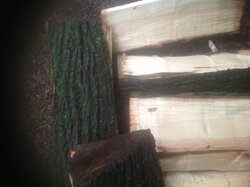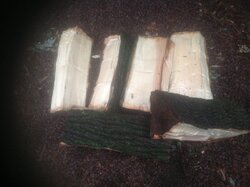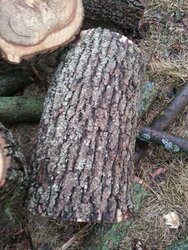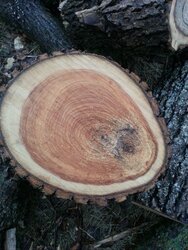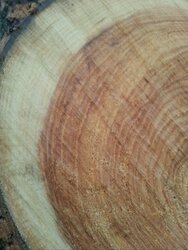Applesister
Minister of Fire
Im still sticking with Ash, because of the bark on the smaller limbs like someone said. And the thickness of the inner bark...the orangey tan. The inner bark is too thick to be Norway.
The splits display the growth rings.
The splits display the growth rings.


